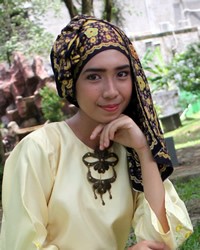Jambi in Indonesia

Photo Source:
Wasnisahmahdi - Wikimedia
Creative Commons
|
Send Joshua Project a map of this people group.
|
| People Name: | Jambi |
| Country: | Indonesia |
| 10/40 Window: | Yes |
| Population: | 1,277,000 |
| World Population: | 1,277,000 |
| Primary Language: | Malay, Jambi |
| Primary Religion: | Islam |
| Christian Adherents: | 0.06 % |
| Evangelicals: | 0.01 % |
| Scripture: | Portions |
| Ministry Resources: | No |
| Jesus Film: | Yes |
| Audio Recordings: | Yes |
| People Cluster: | Melayu of Sumatra |
| Affinity Bloc: | Malay Peoples |
| Progress Level: |
|
Introduction / History
The Jambi people, also known as the Jambi Malay or Melayu Jambi, primarily live in central Sumatra. Jambi culture has been heavily influenced by the Minangkabau. The Jambi are a very proud people due to their links with the ancient Malay kingdom that flourished from the 7th century AD until the Middle Ages. Sadly, this pride now threatens their economic development due to their unwillingness to accept modernization and reform.
The Jambi language is part of the Malay language cluster.
What Are Their Lives Like?
Most of the area inhabited by the Jambi is a lowland basin of dense jungles, peat bogs, swamps and rivers. The mighty Batang Hari River and its many tributaries drain the area. The river system, which is 409 miles/655 km long, provides the main means of transportation between communities of transportation and as a source of fish.
The Jambi are adept swimmers and fishermen. Most Jambi earn their livelihood from fishing. They use eight types of traditional fishing tackle, as well as the modern fishnet. They are great eaters of fish and complain that a meal is incomplete if lacking the distinctive fish flavor. They catch, sell and eat over eleven types of fish. Other ways of making a living include farming and plantation work.
This can be seen when comparing their lives to those of transmigrants to the Jambi area, who
The Jambi perform many traditional ceremonies and special rituals at various milestones of maturity in their children. These include the birth of a child, giving a name to the child, cutting the child's hair for the first time, piercing a girl's ears at age two and circumcision for boys between the ages of six and ten years old. When a child reaches the age of adulthood (15 years old for a female and 17 years old for a male), they file the child's teeth to make them even, as a rite of passage into adulthood.
Because the Jambi reject modern economic development, they have a lower standard of living than others in the area.
What Are Their Beliefs?
Almost all of the Jambi are Muslim. Every village has a mosque or prayer house and typically also an Islamic religious school (madrasah). For the Jambi, all principles and guidelines governing human life originated with their ancestors, who in turn received them from the Koran and the Hadith (written instructions for faith and practical matters taken from the life of the prophet Mohammed). The Jambi also believe that religious leaders, dwarves and shamans have supernatural powers.
What Are Their Needs?
Many Jambi feel exploited by the transmigrants who have come in the area over the past few decades. Greater educational assistance will help them learn skills that will make them more competitive with other ethnic groups who have moved into the area. Modern medicine and health education would improve their overall health.
Prayer Points
Pray for more openness on the part of the Jambi to modern advances in areas like medicine and education. Ask God to raise up workers who can help the Jambi incorporate these advances without destroying their culture.
Ask God to open the hearts of the Jambi to the gospel. Pray for Jesus to reveal himself to family leaders and village elders in dreams and visions.
Thank God for the availability of the JESUS film in the Jambi Malay language. Pray for the completion of the translation of the New Testament.
Pray for a Disciple Making Movement for the Jambi people that will result in disciples and churches multiplying through multiple generations.